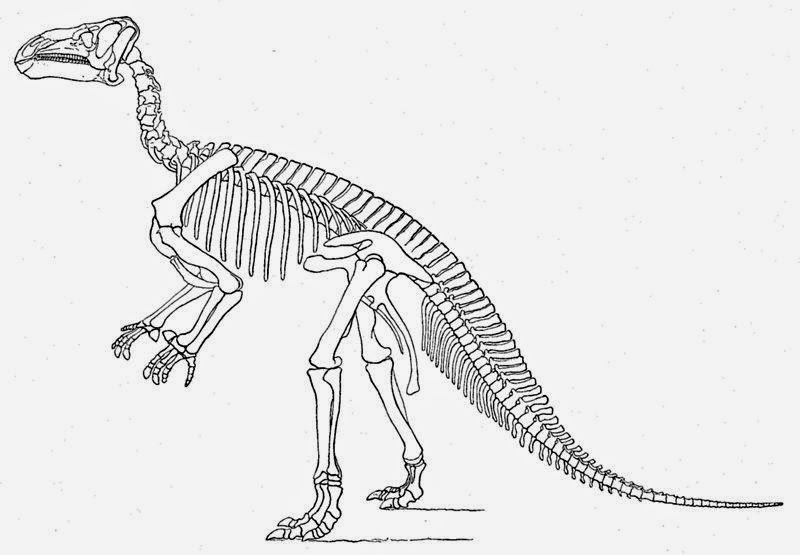 |
| Reconstruction of skeleton by Marsh (public domain) |
Iguanodon has had a checkered history. The first fossils, described in 1825, have since been reassigned to a different genus, and technically there is only one species in the genus Iguanodon. Subsequent fossil discoveries included some nearly complete specimens, so its anatomy can be analyzed with confidence. In 1878, at least 38 iguanodon individuals were found in a coal mine at Bernissart, Belgium, a town that gives its name to the sole iguanodon species. Their presence in the coal beds initially created considerable confusion, because the coals were Carboniferous in age. Dinosaurs were definitely anomalous in Carboniferous rocks, so what was up? Careful mapping of the rocks in the coal mine revealed the presence of an ancient 300-foot ravine, a channel cut into the Carboniferous beds. The interpretation is that a herd of grazing iguanodons stampeded over the edge of the ravine, falling to their deaths surrounded by cliffs of Carboniferous coal. If you want to imagine that they were being chased by some big carnivorous predator, you can. The ravine was later filled in with Cretaceous sediments, and it was recognized that the fossils were actually within those age-appropriate rocks rather than in the Carboniferous coal.
 |
| Thumb claw photo by en:user:Ballista, used under Creative Commons license |
—Richard I. Gibson
Reconstruction of skeleton by Marsh (public domain)
Thumb claw photo by en:user:Ballista, used under Creative Commons license

No comments:
Post a Comment